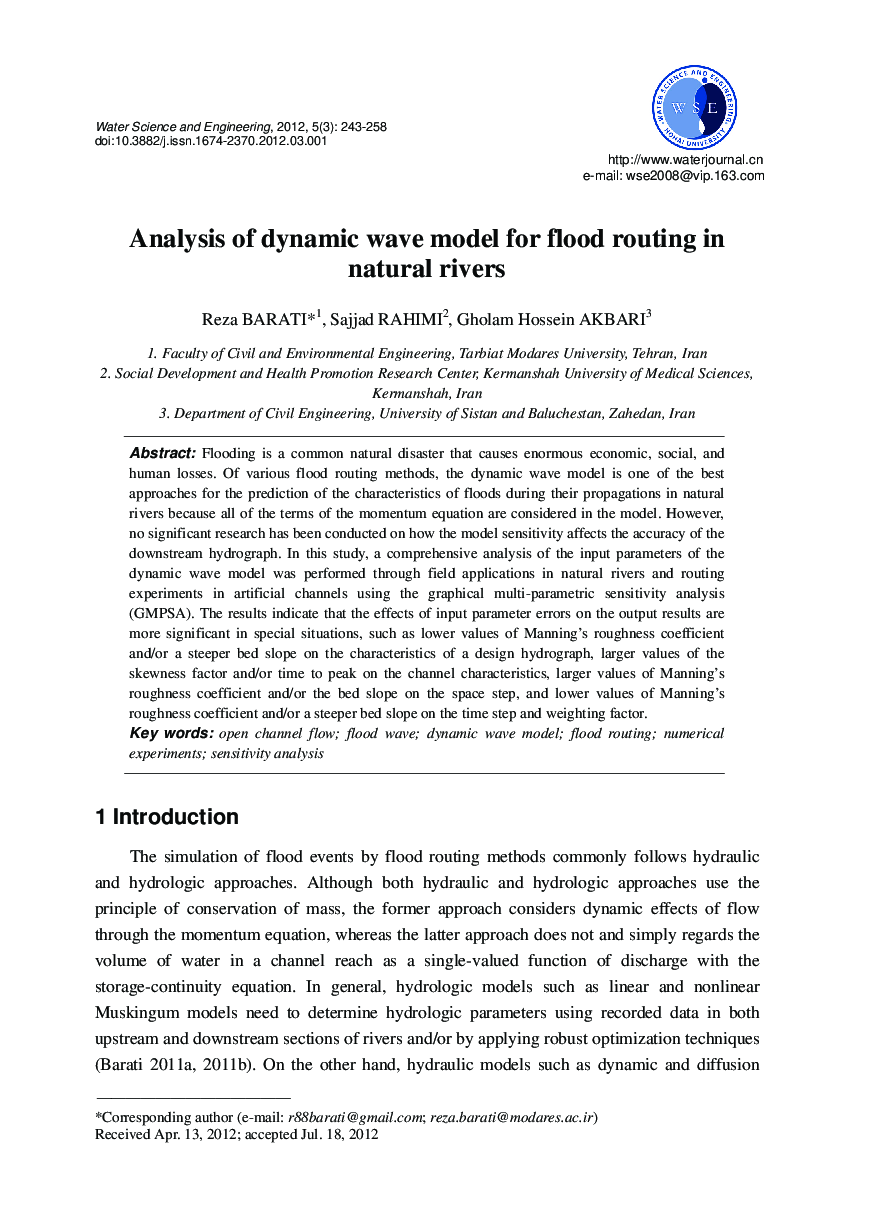| Article ID | Journal | Published Year | Pages | File Type |
|---|---|---|---|---|
| 313116 | Water Science and Engineering | 2012 | 16 Pages |
Flooding is a common natural disaster that causes enormous economic, social, and human losses. Of various flood routing methods, the dynamic wave model is one of the best approaches for the prediction of the characteristics of floods during their propagations in natural rivers because all of the terms of the momentum equation are considered in the model. However, no significant research has been conducted on how the model sensitivity affects the accuracy of the downstream hydrograph. In this study, a comprehensive analysis of the input parameters of the dynamic wave model was performed through field applications in natural rivers and routing experiments in artificial channels using the graphical multi-parametric sensitivity analysis (GMPSA). The results indicate that the effects of input parameter errors on the output results are more significant in special situations, such as lower values of Manning's roughness coefficient and/or a steeper bed slope on the characteristics of a design hydrograph, larger values of the skewness factor and/or time to peak on the channel characteristics, larger values of Manning's roughness coefficient and/or the bed slope on the space step, and lower values of Manning's roughness coefficient and/or a steeper bed slope on the time step and weighting factor.
